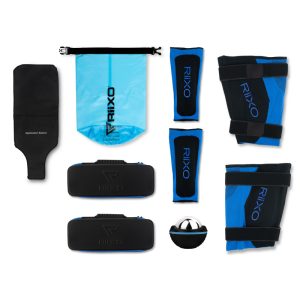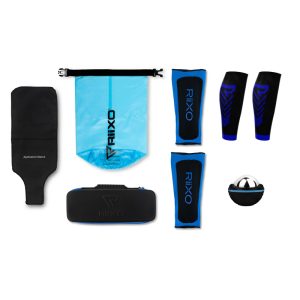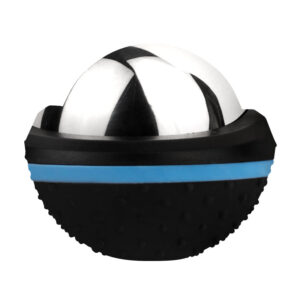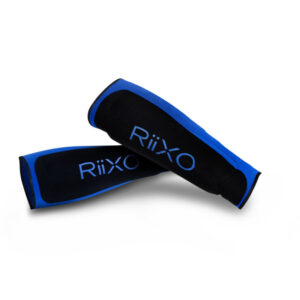
Today, we are looking at what can I do to prevent muscle soreness (DOMS) after exercise.
Exercise is life, but at times, it can come with a painful price if we don’t manage it adequately.
Delayed onset muscle soreness (DOMS) is a common result of physical activity that stresses the muscle tissue beyond what it is accustomed to, this can usually last between 24 and 48 hours. In some instances, DOMS can even last longer, depending on the intensity of exercise and fitness level of the individual.




Two decades ago, several studies had demonstrated that massage therapy may be promising in alleviating symptoms of DOMS (Ernest, 1998; Smith et al., 1994). Another study also showed that although massage was effective in alleviating DOMS by approximately 30% and reducing swelling, there were no effects on muscle function (Zainuddin et al., 2005).
There was also a study comparing the effects of vibration therapy and massage in the prevention of DOMS. It was concluded that vibration therapy and massage are equally effective in preventing DOMS. Massage is shown to be effective in the restoration of concentric strength (1 RM). However, vibration therapy shows clinically early reduction of pain and is effective in decreasing the level of lactate dehydrogenase in 48 hours post-exercise periods (Imtiaz et al., 2014).
Active recovery has proven to be the most effective way to reduce DOMS after running. When you are planning your run, aim to finish 15-minute walk from your final destination, such as arriving back home. What you want to do over the 15 minute period is gradually reduce your run from your training pace till you are back to walking. This enables the body to process all the waste products that build up in the muscles, and prevent pooling and the sudden shock of an abrupt stop. Read more here.
Ice has been used for a long time amongst athletes but has gained more notoriety over the past decade. It reduces inflammation, decreases pain signals that are going to the brain which in turn, reduces the bodies natural response to pain. Ice (cryotherapy) has also been found to improve how the cells function, making them more efficient at energy production. Over time, all of these benefits will help to prevent DOMS and muscle soreness. The primary benefit is the ice causes a constriction of blood vessels which helps the body remove lactic acid from the muscles, one of the primary causes of DOMS.
There have been a number of studies being produced to see if heat reduces muscle soreness after exercise and prevent DOMS. By increasing the temperature of the muscle this increases the volume of oxygenated blood that will flow into an area. Heat also causes the blood vessels to expand allowing more blood and nutrients into the area.
Heat works best when it is immediately used after ice, also called contrast therapy.




References
Bakhtiary, A.H., Safavi-Farokhi, Z. and Aminian-Far, A., 2007. Influence of vibration on delayed onset of muscle soreness following eccentric exercise. British Journal of Sports Medicine, 41(3), pp.145-148.
Cheung, K., Hume, P.A. and Maxwell, L., 2003. Delayed onset muscle soreness. Sports Medicine, 33(2), pp.145-164.
Ernst, E., 1998. Does post-exercise massage treatment reduce delayed onset muscle soreness? A systematic review. British Journal of Sports Medicine, 32(3), pp.212-214.
Herbert, R.D., de Noronha, M. and Kamper, S.J., 2011. Stretching to prevent or reduce muscle soreness after exercise. Cochrane Database of Systematic Reviews, (7).
Imtiyaz, S., Veqar, Z. and Shareef, M.Y., 2014. To compare the effect of vibration therapy and massage in the prevention of delayed onset muscle soreness (DOMS). Journal of Clinical and Diagnostic Research: JCDR, 8(1), p.133.
Sayers, S.P. and Dannecker, E.A., 2004. How to prevent delayed onset muscle soreness (DOMS) after eccentric exercise. International Sports Med Journal, 5(2), pp.84-97.
Smith, L.L., Keating, M.N., Holbert, D., Spratt, D.J., McCammon, M.R., Smith, S.S. and Israel, R.G., 1994. The effects of athletic massage on delayed onset muscle soreness, creatine kinase, and neutrophil count: a preliminary report. Journal of Orthopaedic & Sports Physical Therapy, 19(2), pp.93-99.
Zainuddin, Z., Newton, M., Sacco, P. and Nosaka, K., 2005. Effects of massage on delayed-onset muscle soreness, swelling, and recovery of muscle function. Journal of Athletic Training, 40(3), p.174.
 Cracking The Injury Risk Equation
Cracking The Injury Risk Equation
 LJMU Study Findings
LJMU Study Findings
 What are shin splints?
What are shin splints?
 How to treat shin splints [2021]
How to treat shin splints [2021]
No Thanks – I’ll pay full price
Close Window
Close Window
[…] Click Here […]